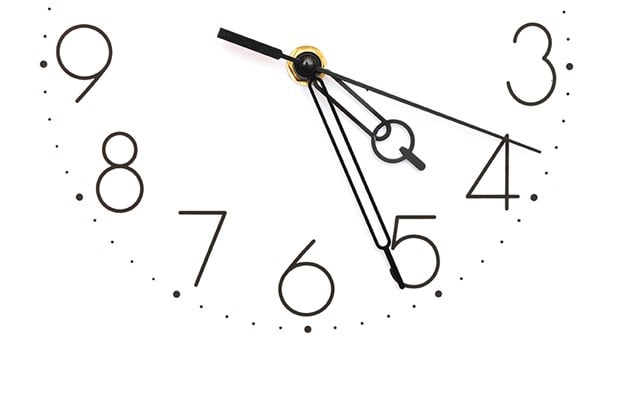An important task for us engaged in biological rhythms and light research is to give reasons for maintaining normal time rather than daylight savings time all year around. Most people have found that light immediately gives us more energy and makes us alert. These positive effects are connected to the ability of bright light to activate the arousal system of the brain.
To obtain a ”light pulse” in the afternoon may contribute to active free time activities after work, also outdoors. This is a benefit of summer time with brighter evenings in spring and summer.
The light researcher also tries to predict what will happen to us during the rest of the year. From this perspective we have to keep in mind, light influences the regulation of 24-hour rhythms apart from affecting our arousal system. The 24-hour, or circadian, regulation forms part of a slow acting influence of brain processes were light exposure one day is affecting the circadian rhythm the next day.

The circadian regulation is fundamental and important for us to be able to maintain focus at work in daytime and to obtain recovery at night. In circadian disruption we get weary, may experience sleep problems and show worse performance. Normally the daylight influence in spring and summer at Nordic latitudes ensures our circadian system to work properly.
About 80% of all yearly energy from the sun reaches us during the period March-August. During the period September-February we only obtain 20%. This results in increased fatigue. Especially groups that do not spend much time in daylight (< 2 hours) report problems. Risk groups are young age groups, especially women and elderly.
Lack of daylight influences circadian regulation and 24-hour rhythms are delayed. Bedtimes are delayed and sleep is shortened. Work and school demand use of alarm clocks. Sleep deficit, circadian disruption and worsened mood are common. Medication has markedly increased among groups with low exposure of daylight.

In order to be able to entrain to a day-oriented rhythm or advance rhythm there is a need of morning light. It is useful to know that light in the afternoon only mildly affects entrainment. Evening light rather counteracts the need of many individuals to promote morningness in their daily life. This is the reason why standard time is of importance for us living at Northern latitudes. Standard times give us an extra hour of daylight during morning hours in autumn and winter. To give an example, if we were to accept daylight savings time in Stockholm in winter, the sun would rise after 09:00 in 70 consecutive days. While maintaining standard time the sun would never rise after 09:00.
But even if a standard time would be a correct recipe for health, we still know there will be daylight scarcity. We need to illuminate the mornings with electric light. Already at breakfast this would be helpful. The morning light awakens the brain, signals to the brain to adjourn the night and the circadian system is geared towards morningness. Transport in daylight to work and school is of great importance as well as opportunities to sit near a window to catch the brightness of daylight.

For those not having access to daylight an array of arrangements may be implemented with help from the lighting industry. An option could be individually controlled extra lighting by the work desk, bright light opportunities at rest areas and meeting rooms as well as increased ambient lighting at the work place. But an increased luminance will pose a danger if the design increases glare, flicker and uncomforting contrasts, that has to be evaluated. Also, lighting solutions has to be able to adjust to individuals with special needs for example due to aging or light sensitivity. It might too early to give exact recommendations but future recommendations will be helpful and moving towards use of more biologically oriented measures such as melanopic lux or circadian strength.
,(0.5,0.5,1,1)&format=jpg)
,(0.5,0.5,1,1)&format=jpg)